


Framed or unframed, desk size to sofa size, printed by us in Arizona and Alabama since 2007. Explore now.
Shorpy is funded by you. Patreon contributors get an ad-free experience.
Learn more.

- S&P
- 1940 Zenith radio model 6G601
- Quality goes in before the name goes on!
- Snazzy skirt
- Carbon Arc Lamps
- Illuminate us
- I remember it well
- I can't prove it
- Complicated then, forgotten now
- Bryan-Stevenson
- Skinny is as skinny does
- How do you rest in peace
- Riding the footboards
- Alas, hidden from view
- Baldwin Diesels
- Exclusive pump
- Bananas, Oysters and Smokey Joe
- Details, Details
- What's that building to the left of the tower?
- Coal Barges
- Bromo-Seltzer
- Inner harbor
- The Basin
- What a headache!
- Giant stepladder?
- Yeah, it was cold
- Love those coats
- Link & Pin Days Remnant
- Baldwin 62303
- Baldwin VO-1000
Print Emporium
Detroit Opera House: 1904
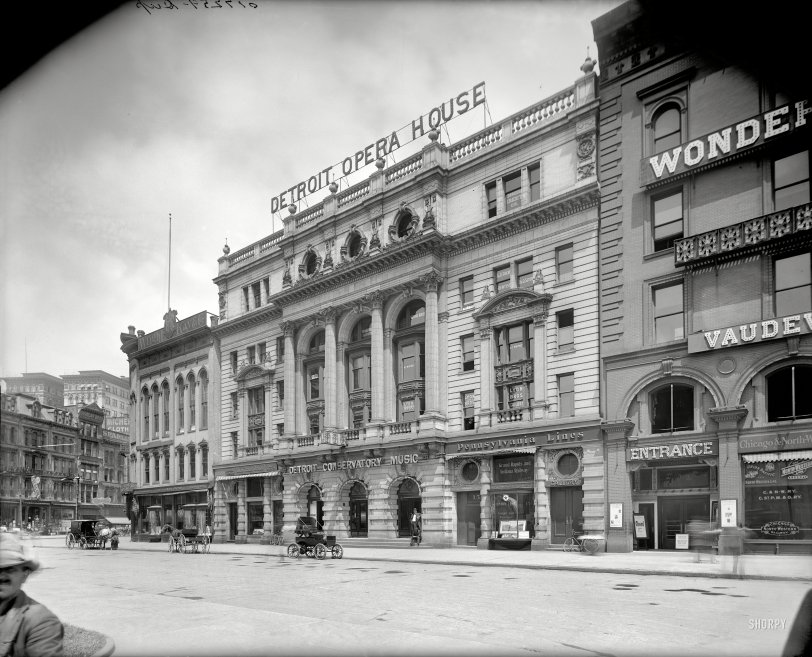
The Detroit Opera House circa 1904, starring an electric runabout out front. 8x10 inch dry plate glass negative, Detroit Publishing Company. View full size.
Horses
Calm and unaware that they were about to be unemployed in very short time.
Waverley
Don Struke has it, I found a vintage Waverley advertisement that certainly seems to match the mystery car closely.
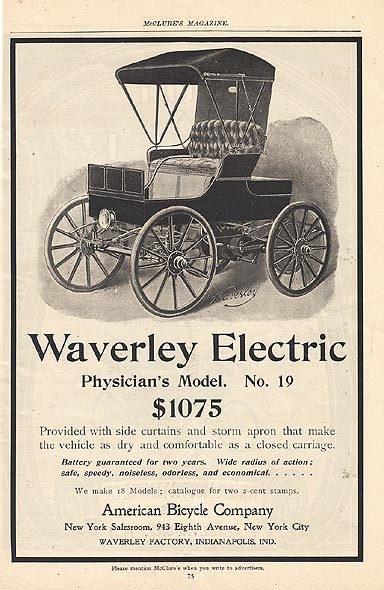
Re: Digital sign again
A carriage call indeed. Picture below shows numbers lit.
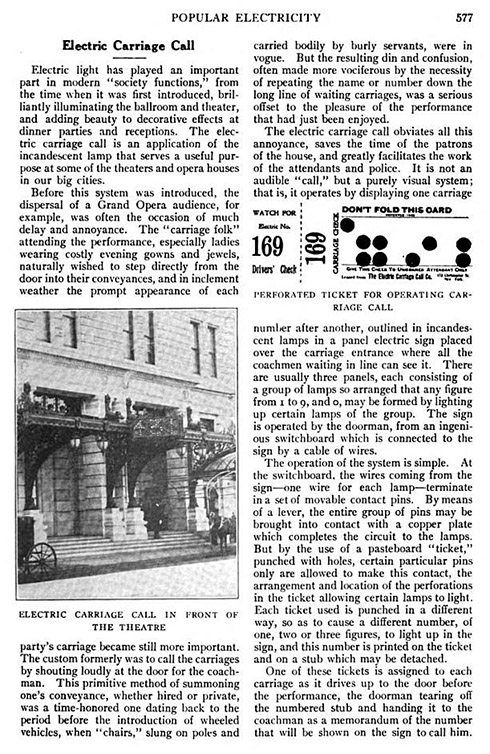
Mysterymobile
I'm almost certain it's a Waverly Runabout, built in Indianapolis. I have a current-day photo but it's somebody's property. Note its steering is via a front tiller whereas the Studebaker has its tiller on the side.
About that haystack
My first thought when I looked at the full-size image was Studebaker. After further research the answer will have to be no, they were building a Runabout with very similar bodywork and proportions in that era but it had major mechanical differences from this machine.
As BradL said, this was a time when literally hundreds of companies ranging from blacksmiths, to buggy shops, to established manufacturers of sewing machines and other mechanical equipment, all took a fling at the automobile.
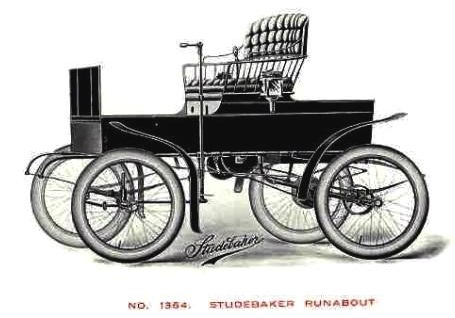
Wright & Kay
The jewelry firm of Wright & Kay (big sign atop building) was formed in May 1906 by Ohio native Henry M. Wright (a Civil War veteran as a member of Co. B, 85th Ohio Volunteers) and John Kay, who was born in Scotland. They were jewelers, opticians, importers and dealers in watches, clocks, diamonds, marble statuary, silver and plated ware and fine stationery, and they manufactured watches and other products under their own name. Recently some Wright, Kay & Company watches were auctioned at Christie's.
Re: The proverbial needle
I think I have identified the car. It's an AJAX ELECTRIC. I have attached a photo from an advertisement from 1903, for visual comparison.
[Here they are together. Among other differences, note the absence of front leaf springs. - tterrace]
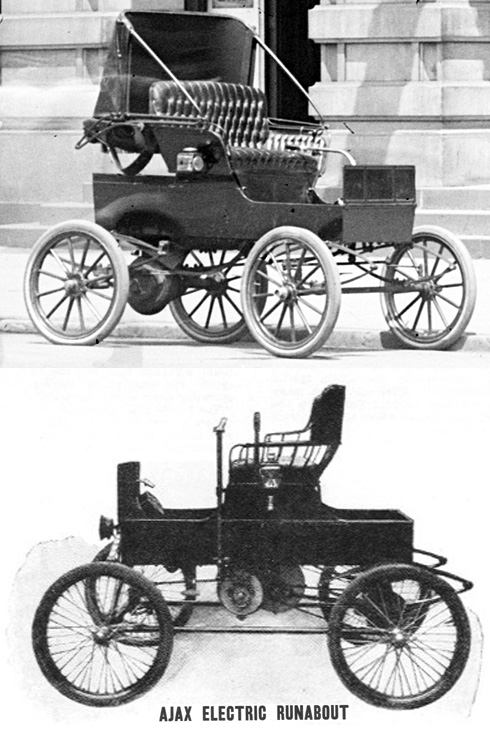
The proverbial needle
Concerning identifying the automobile, unless it was built by a select few makers, I doubt it can be positively identified.
During this period there were around a thousand automobile manufacturers in America alone. What we do know is that it's an early brass era runabout with tiller steering, semi-eliptical leaf springs at each corner, and wooden spoked wheels. That should narrow it down to about 50 manufacturers, some of which existed for only a few years.
Identify car?
Great picture! Can anyone identify that nifty little car?
Videochas Pic
That's Horseshoe Curve, near Altoona, PA
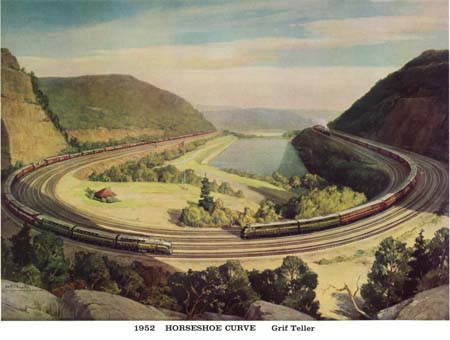
Pennsylvania Lines
The Pennsylvania Railroad was a late arrival in Detroit, not gaining a direct entrance there until 1922, and then only by trackage rights on the Ann Arbor, Pere Marquette and Wabash Railroads. The Grand Rapids and Indiana Railroad was chartered in 1854 to build a line from Fort Wayne to the Straits of Mackinaw through Grand Rapids. It became part of the Pennsylvania Lines in 1869. It too had no direct connection to Detroit, relying on a connection with the Wabash in Ft. Wayne to get to the Motor City.
What is that thang?
Sharp eyes as usual from tterrace, but I can't make out just how this configuration of three identical sets of light-bulb "dots" could be lit to form letters or numbers. The mysterious device's Academy of Music installation, at right, appears to include some kind of identifying signage on the end of the clapboard base beneath it. Dave, is your highest-res tiff file of this photo sufficiently clear to read that information?
[Not clear enough on the full LOC tiff, unfortunately. - tterrace]
Makes My Heart Sing
What a lovely building! I was born in the wrong era. I come to Shorpy everyday and I'm never disappointed with the photos here. I would hope this building is still standing. I absolutely love the honeycomb glass transom at the entrance door. I wish buildings of today had the details of old world craftsmanship. Sigh.
[Demolished 1966. - tterrace]
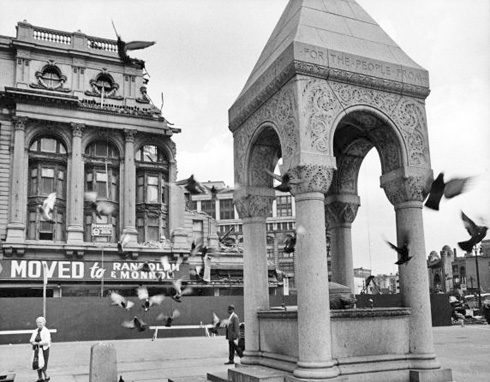
High Bridge?
Look in the window of the Pennsylvania Lines shop. Is the picture on the easel that of the High Bridge of recent memory?
[Unfortunately, no. - tterrace]
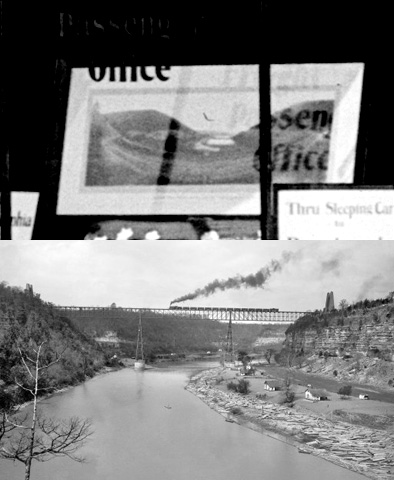
Digital sign again
I've noticed that each time we've seen one of those "digital" signs it's been on or in front of a large theater, opera house or concert hall, the type of venue you'd expect the upper classes, rather than the hoi-polloi, to frequent. My speculation: it's something used to signal carriages for their ritzy patrons. Below: this one compared to ones at Philadelphia's Nixon Theatre and Academy of Music.
Update: Thanks to TomHe for confirming my speculation.
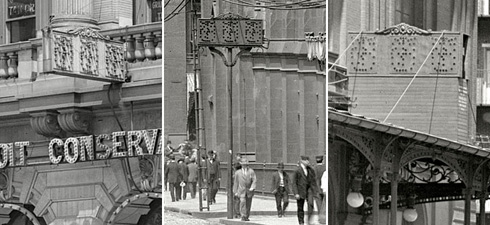
Detroit Conservatory Music
What, they were too cheap to spring for an "of"?
























On Shorpy:
Today’s Top 5